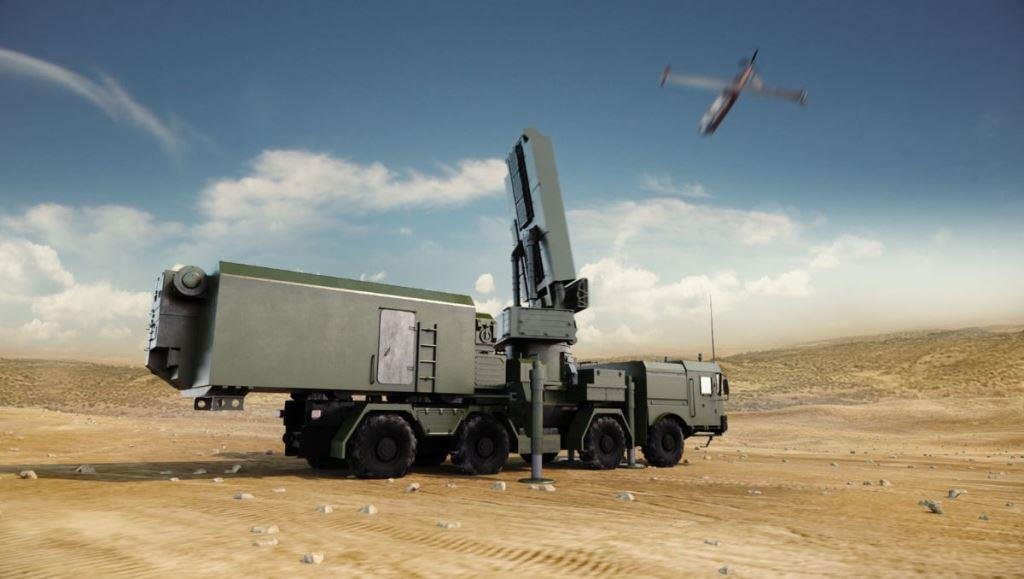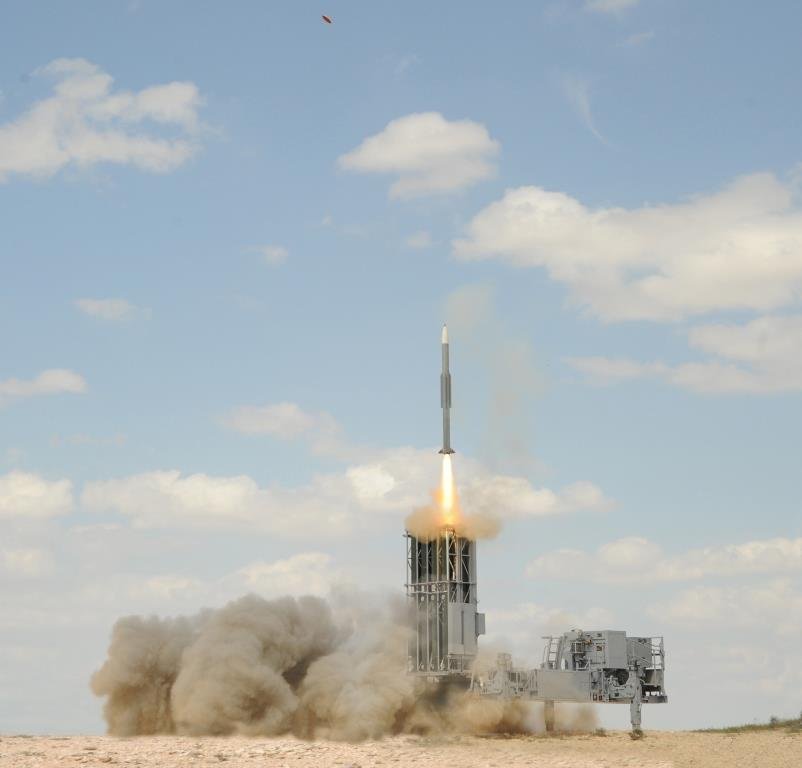TECHNOLOGY PROFILE - IAI’s cutting-edge Air Defense System
BY GABRIEL OAKLEY
Transforming Aerial Strike and Defense
IAI's cutting-edge technologies are helping secure the skies in contested areas.

SECURING THE SKIES WITH BARAK MX
The BARAK MX is IAI's cutting-edge air defense system that meets Israel's stringent requirements and is a critical component of the country's air defense network. Since its operational debut in 2016, this combat-proven system has been adopted by several countries, including a NATO country for national Ground Based Air Defence (GBAD), naval air defense, and wide-area air defense missions.
BARAK MX features a fully network-centric system with an open system architecture and modular design that seamlessly integrates various sensors, battle management, and interceptors into a unified system. Robust electronic and cyber protection ensures system readiness and operability in the face of modern adversaries.
BARAK MX unique Joint Task Force connectivity allows for the expansion of defended areas by interconnecting multiple units, enabling fire units to rely on each other's assets to engage targets beyond the individual reach of each unit. It also allows the integration of land-based and naval air defenses under a joint multi-layered defense network.
BARAK MX interceptors were designed as surface-to-air missiles, allowing them to surpass the limitations of air-to-air missiles adapted for surface-to-air use. The system employs several types of interceptors covering engagement ranges from 35 to 150 km, each with the speed and maneuverability that maximize the target no-escape zone and probability of kill (Pk). These interceptors employ advanced active Radio Frequency (RF) seekers providing optimal target detection and tracking in all weather and visibility conditions. Missile datalinks ensure the interceptor initiates the target pursuit even before the battery sees the target (Launch on Remote - LOR), further enhancing the system's efficiency and overall capability.
The different interceptors can be stored and launched from the BARAK-MX Smart launcher, enabling the system to allocate the most suitable interceptor from the best- positioned fire unit. The smart launcher is designed for network-based operation, enabling efficient protection against air-breathing targets (ABT) and Tactical Ballistic Missiles (TBM), which are significantly beyond the capabilities of legacy systems.
Adding more networked launchers enables users to scale up their air defense capabilities, adapting to battlespace dynamics and the introduction of new threats. Similar air defense capabilities can be employed at sea.
When replacing legacy air defense systems, BARAK-MX offers more flexible deployment, a larger defensive footprint, and an improved force economy. BARAK-MX can easily integrate with existing defense systems and battle management networks thanks to its open-system flexibility and compatibility with various sensors, communications, and data links, including NATO protocols.
LOITERING MUNITIONS 
Loitering Munitions (LM) have emerged as a disruptive new weapon category following numerous deployments in recent conflicts. This weapon has shaped the battlefield and inflicted damage at scales far beyond its physical size. As a result, armed forces worldwide are interested in this weapon category's offensive and defensive aspects.
The first use of LM at a large scale was during the Second Nagorno-Karabakh War in 2020. The Ukraine conflict further demonstrated the use of loitering munitions at increasingly lower echelons, delivering highly effective performance in different roles, from intelligence gathering, reconnaissance, and strike actions.
One of these loitering weapons, the HAROP, has fundamentally changed 21st-century warfare. Unlike rockets, mortars, or even guided missiles, HAROP operates in a concept of "shoot first and then seek a target," in which no preliminary intelligence is needed. This capability makes it a most effective weapon against high-value Time-Critical, or Time-Sensitive Targets (TCT/TST). Operating under harsh battlefield conditions and electronic countermeasures that prevented other loitering munition systems from taking off from their launchers. Hundreds of the robust and battle-tested HAROP LMs proved highly effective in combat, delivering 98% mission success.
According to IAI, the company was the first to invent this type of weapon. In the 1980s, IAI pioneered the category of loitering weapons by introducing the HARPY, initially dubbed as a "Kamikaze Drone," a name that often misrepresents such a versatile weapon system. HARPY was designed for the autonomous Suppression of Enemy Air Defense (SEAD) missions, replacing combat aircraft in this ultra-dangerous mission. The HAROP, which evolved from the HARPY, carries an electro-optical sensor instead of the RF seeker of the HARPY, converting the weapon into a multi-purpose strike weapon that was proved as a game changer for its operating countries.
MINI HARPY
While HARPY and HAROP are designed to support long endurance and extended mission range, the MINI HARPY is a versatile, compact (up to 45 kg) lethal tactical platform, using electric propulsion for stealth and agility. Launching from a three-meter-long canister tube, the MINI HARPY provides approximately 1.5 hours of in-flight endurance, operating at a range of up to 100 kilometers. It has a powerful warhead containing seven kilograms of hollow charge and shrapnel (HEDP).
MINI HARPY illustrates IAI's pioneering and innovative spirit in the field of LMs. It is the first and only tactical loitering weapon equipped with a multi-spectral payload employing RF and electro-optic seeker, enabling it to cover the entire hemisphere with its RF sensor. On a typical mission, the RF sensor scans the airspace around it to profile the spectral signatures of suspected targets. Once targets are spotted, the onboard electro-optic sensor is cued to investigate the most critical targets. With a broadened spectrum sensing capability, MINI HARPY can utilize both sensors simultaneously, enabling the anti-radiation (AR) sensor to cue the camera onboard. This capability allows users to cover large areas and look for targets more effectively rather than searching for them through a straw.
The AR capability of the MINI HARPY enables quick and efficient destruction of Enemy Air Defense (DEAD) before they cause damage to friendly air targets. The RF sensor can pinpoint the target location regardless of clouds, fog, or under cover of trees and camouflage, making it effective under any visibility conditions. Early detection of air defense targets will enable better and safer planning, placing the LM routes outside the air defense batteries' Missile Engagement Zone (MEZ). MINI HARPY can strike targets within its 100 km operating range with one-meter accuracy. It enables ground units to extend operations deeper into a hostile area or employ offensive weapons from far back if necessary.
SHARING TECHNOLOGY
WITH PARTNERS
IAI is ready to introduce its new capabilities and technologies by promoting cooperation with partners in strategic markets. As the owner of intellectual properties (IP) and design authority of the systems it produces, IAI is ready to share technology with its partners. Through such partnerships, customers and partners maintain sovereignty, efficiency, growth potential, and economic through-life support for their weapon systems.
Gabriel Oakley is a Regular CDR Contributor

